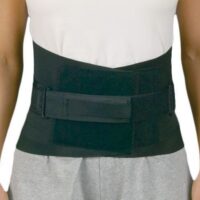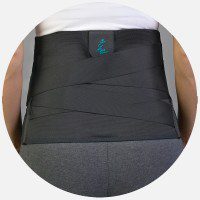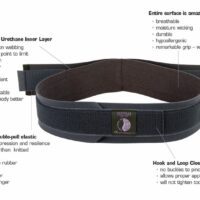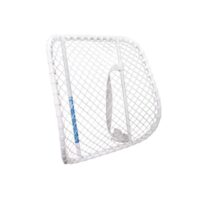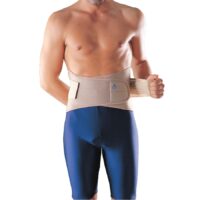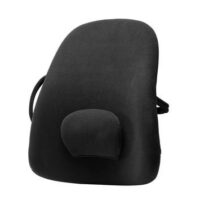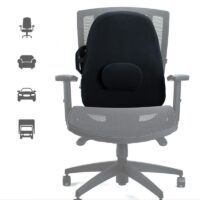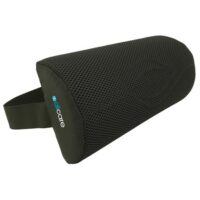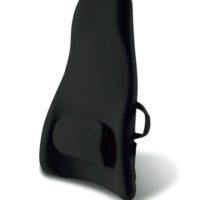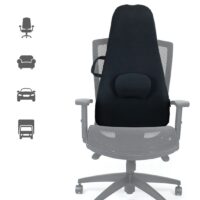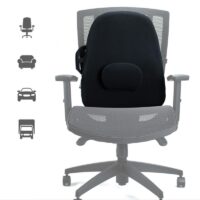Pulled Back Muscle
Article by John Miller

Pulled Back Muscle
How to Quickly Overcome Back Muscle Pain
Back muscle pain, commonly referred to as a pulled back muscle, affects numerous individuals, making it a prevalent source of discomfort. However, it’s also one of the conditions that respond well to treatment and rehabilitation, promising a swift recovery for those affected.
What Causes Back Muscle Pain?
The reasons behind back muscle pain are diverse, ranging from muscle fatigue and excessive loads to awkward lifting and poor postures. These factors contribute to the weakening or overstraining of back muscles, leading to discomfort and, in some cases, severe pain.
What Does a Pulled Back Muscle Feel Like?
Symptoms of a pulled back muscle include localised pain, muscle stiffness, and spasms, usually presenting a sharp pain during movement transitions. It’s crucial for individuals experiencing these signs to consult a healthcare professional for a precise diagnosis and tailored treatment plan.
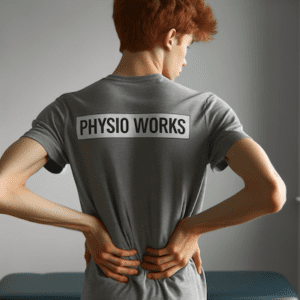
Diagnosing the Condition
Diagnosing back muscle pain involves a comprehensive assessment by a healthcare professional, such as a physiotherapist. While X-rays might not reveal muscle or ligament damage, MRI scans are more effective in identifying the extent of the injury.
What is the Fastest Way to Heal a Pulled Back?
Consulting a spinal health practitioner is a critical step towards recovery. Treatment varies significantly based on the diagnosis, but physiotherapy plays a pivotal role in the healing process. It not only alleviates pain but also focuses on restoring normal range of motion and strength, ultimately aiming to prevent recurrence.
What Helps a Pulled Back Heal Faster?
- Pain Relief & Protection: Initial treatment focuses on reducing pain through various techniques, including ice, electrotherapy, and soft tissue massage.
- Restoring Normal ROM and Strength: Rehabilitation then moves towards restoring flexibility and strength, with a focus on core stability exercises.
- Restoring Full Function: Tailored rehabilitation ensures the return to daily activities or sports, with specific goals based on individual needs.
- Preventing Recurrence: Ongoing exercises and proper posture maintenance are crucial to avoid future back pain.
How Long Does it Take for a Pulled Back Muscle to Heal?
The healing time for a pulled back muscle can vary depending on the severity of the injury and the individual’s overall health and age. Generally, minor to moderate pulled back muscles can start to feel better within a few days to a week, with significant improvement within 2 to 4 weeks. However, more severe injuries might take 6 weeks or more to heal fully.
During this time, proper care is crucial to ensure a smooth recovery. This includes following a physiotherapist’s advice, engaging in appropriate exercises, avoiding activities that may strain the back further, and possibly using treatments such as ice, heat, and over-the-counter pain relief if recommended.
It’s also important to gradually reintroduce activities and not rush back into heavy lifting or high-impact activities too soon, as this can risk re-injury. In some cases, ongoing maintenance exercises and attention to posture and ergonomic practices can help prevent future injuries.
For a tailored recovery plan and specific advice, consulting a healthcare professional or a physiotherapist is always recommended. They can assess the injury’s severity and provide a personalised treatment plan to support optimal healing.
What to Do?
If you’re suffering from a pulled back muscle, consulting a physiotherapist is vital. They can provide a professional diagnosis and a customised treatment plan to help you recover quickly and efficiently.
Rochedale - Call 38410277
Book Online: RochedaleSalisbury - Call 32751044
Book Online: SalisburySandgate - Call 32691122
Book Online: SandgateBack Muscle FAQs
1. How long does a pulled back muscle take to heal?
The healing time for a pulled back muscle varies. Minor to moderate injuries can start feeling better within a few days to a week, with significant improvement in 2 to 4 weeks. Severe injuries might take 6 weeks or more.
2. What should you do if you pull a muscle in your back?
If you pull a muscle in your back, consult a physiotherapist immediately. They will provide a diagnosis and a treatment plan tailored to your needs, including pain relief, restoring function, and preventing recurrence.
3. What is the best treatment for a pulled back muscle?
The best treatment for a pulled back muscle includes pain relief techniques such as ice application, protection eg kinesio taping, and soft tissue massage. Rehabilitation exercises to restore strength and flexibility are also crucial.
4. Can physiotherapy help with pulled back muscles?
Yes, physiotherapy is highly effective in treating pulled back muscles. It helps alleviate pain, restore normal function, and prevent future injuries through tailored exercises and treatments.
5. How can I prevent pulling a muscle in my back?
Preventing back muscle strains involves maintaining good posture, using proper lifting techniques, and engaging in regular exercises that strengthen your core and back muscles.
6. Is it normal to experience muscle spasms with a pulled back muscle?
Yes, muscle spasms are a common symptom of a pulled back muscle. They usually occur as sharp pain during movement transitions. Consult a physiotherapist or doctor for a proper diagnosis and treatment plan.
Related Articles
- Back Pain Treatment: Discover comprehensive approaches to managing back pain effectively.
- Sciatica: Symptoms, Causes, and Treatment: Learn about sciatica and how it relates to back muscle issues.
- Posture Correction: Understand the importance of posture in preventing back pain.
- Core Strengthening: Explore exercises to strengthen the core and support the back.
- Ergonomics: Tips on setting up your work environment to prevent back pain.
- Back Pain Relief: Readers can find strategies for easing back pain, focusing on practical and immediate relief methods.
- Understanding Muscle Strains: Offers a deeper understanding of how muscle strains occur, specifically in the back, and how to manage them.
- Preventing Back Pain: Offers advice on daily practices and exercises to maintain a healthy back and prevent muscle strains.
- Managing Chronic Back Pain: Provides strategies for managing long-term back pain, including lifestyle adjustments and therapeutic exercises.
- Heat Therapy for Muscle Pain: Discusses the benefits of heat therapy as a treatment for muscle pain, including pulled back muscles.









